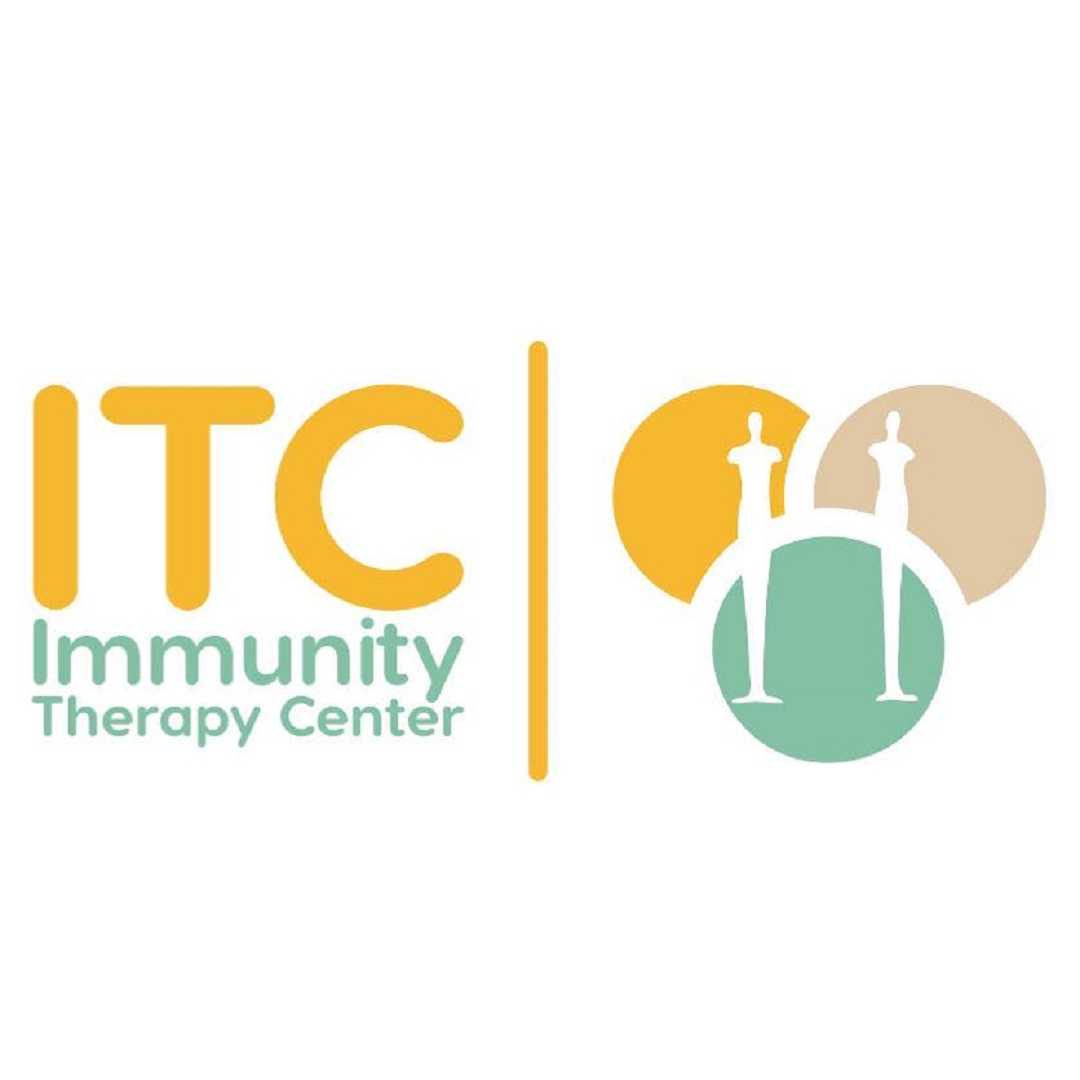Exploring the Benefits of Ozone Therapy for Cancer in Mexico

"Choosing ozone therapy for cancer in Mexico often offers benefits like lower costs, access to a wider range of integrative treatments, and personalized care."
When facing a cancer diagnosis, many individuals explore various treatment options, including alternative and complementary therapies. Among these, ozone therapy has gained attention, particularly in countries like Mexico, where it is often integrated into broader wellness programs. This blog post will delve into the benefits of choosing ozone therapy for cancer in Mexico, addressing common questions and providing detailed explanations to help you understand this approach better. It's important to approach any treatment decision with thorough research and consultation with medical professionals.
What is Ozone Therapy?
"Ozone therapy involves administering medical-grade ozone gas, a highly reactive form of oxygen, into the body to support various therapeutic applications."
Ozone (O3?) is a molecule composed of three oxygen atoms. While ozone in the atmosphere is a pollutant, medical-grade ozone, when administered by trained professionals, is used for its therapeutic properties. The basic idea behind ozone therapy is to introduce this oxygen-rich molecule into the body to trigger specific biological responses. This can involve different methods of administration, such as intravenous (IV) infusions where ozonated blood is returned to the body, or transdermal application in a steam cabinet. Proponents suggest that ozone therapy may help improve oxygen utilization at the cellular level, modulate the immune system, and possess antimicrobial properties.
Why Do People Consider Ozone Therapy for Cancer?
"People consider ozone therapy for cancer due to its purported ability to target cancer cells, enhance oxygenation, and support the immune system."
The rationale behind using ozone therapy for cancer is based on the idea that cancer cells thrive in low-oxygen environments (hypoxia). Proponents suggest that by increasing oxygen levels, ozone therapy may create an environment less favorable for cancer growth. Additionally, ozone therapy is believed to have a selective effect, potentially harming cancer cells while sparing healthy ones, due to differences in their metabolic pathways and antioxidant defenses. It is often considered a complementary treatment, aiming to support the body's natural healing mechanisms and potentially reduce side effects from conventional therapies.
What Are the Potential Benefits of Ozone Therapy for Cancer?
"The potential benefits of ozone therapy for cancer include improved oxygenation, enhanced immune function, detoxification, and reduced inflammation."
Ozone therapy is believed to offer several potential advantages, especially when integrated into a comprehensive cancer treatment plan.
-
Increased Oxygenation: Cancer cells are known to thrive in environments with low oxygen. By increasing oxygen levels in the body, ozone therapy may help to inhibit cancer cell growth and make them more susceptible to other treatments. This concept is sometimes referred to as the "Warburg effect" in reverse, where normal cells utilize oxygen for energy, while cancer cells rely more on anaerobic glycolysis.
-
Immune System Modulation: Ozone therapy can stimulate the immune system, helping the body recognize and fight abnormal cells. It may activate immune cells, such as white blood cells, to enhance their ability to detect and destroy cancer cells. A stronger immune response is crucial in the fight against cancer.
-
Antioxidant and Detoxification Properties: While ozone is an oxidant, controlled medical ozone therapy is thought to stimulate the body's own antioxidant enzyme systems. This can help to neutralize harmful free radicals and reduce oxidative stress, which is often elevated in cancer patients. Furthermore, ozone therapy may assist in detoxifying the body, aiding in the removal of toxins that can contribute to cellular damage and disease progression.
-
Anti-inflammatory Effects: Chronic inflammation is often associated with cancer development and progression. Ozone therapy has anti-inflammatory properties that may help reduce systemic inflammation, potentially alleviating pain and improving overall well-being in cancer patients.
-
Complementary to Conventional Treatments: Many individuals use ozone therapy as an adjunct to conventional cancer treatments like chemotherapy and radiation. It is believed that ozone therapy may sensitize cancer cells to these treatments, enhance their effectiveness, and potentially mitigate some of their harsh side effects, such as fatigue, nausea, and immune suppression.
Why Choose Mexico for Ozone Therapy for Cancer?
"Mexico is a popular destination for ozone therapy for cancer due to its more flexible medical regulations, lower costs, and availability of integrative cancer centers."
Mexico has emerged as a preferred location for those seeking alternative and complementary cancer treatments, including ozone therapy. Several factors contribute to this trend:
-
Regulatory Environment: Unlike some countries where ozone therapy is not widely approved for cancer treatment, Mexico has a more permissive regulatory environment. This allows clinics to offer ozone therapy as part of comprehensive, integrative cancer programs.
-
Affordability: The cost of medical treatments in Mexico, including ozone therapy, is often significantly lower than in countries like the United States or Canada. This makes it a more accessible option for patients who may not have insurance coverage for alternative therapies or are looking to reduce their out-of-pocket expenses.
-
Integrative Approach: Many clinics in Mexico specialize in integrative oncology, combining ozone therapy with a variety of other alternative and conventional treatments. This holistic approach aims to address the patient's overall health and well-being, rather than just focusing on the disease.
-
Experienced Professionals: A growing number of Mexican clinics employ medical professionals with extensive experience in administering ozone therapy and other alternative cancer treatments. These practitioners often have a deep understanding of integrative medicine and offer personalized care plans.
-
Accessibility: For patients from North America, Mexico is geographically convenient, making travel relatively easy and less disruptive for those undergoing treatment.
How Much Does Ozone Therapy for Cancer Cost in Mexico?
"The cost of ozone therapy for cancer in Mexico can range from approximately $8,000 to $18,000 for a comprehensive program, though individual sessions may cost less."
The pricing for ozone therapy for cancer in Mexico can vary significantly depending on the clinic, the specific protocols used, the duration of treatment, and whether it's part of a larger integrative package.
-
Per Session Cost: Some clinics might offer ozone therapy on a per-session basis, with costs ranging from a few hundred to over a thousand dollars per session. However, for cancer treatment, multiple sessions are typically required.
-
Package Deals: Many Mexican clinics offer comprehensive packages for cancer treatment that include ozone therapy alongside other therapies like high-dose vitamin C, hyperthermia, nutritional support, and detoxification protocols. These packages can range from $8,000 to $18,000 or more, depending on the intensity and length of the program.
-
Factors Influencing Cost:
-
Clinic Reputation and Location: Clinics in popular medical tourism destinations like Tijuana or Puerto Vallarta might have different pricing structures.
-
Treatment Duration: Longer and more intensive treatment programs will naturally incur higher costs.
-
Included Services: Packages that include accommodation, transportation, diagnostics, and extensive follow-up care will be more expensive.
-
Type of Ozone Therapy: Different methods of ozone therapy administration (e.g., major autohemotherapy, rectal insufflation, transdermal) might have varying costs.
-
It is always advisable to get a detailed breakdown of costs from the chosen clinic to understand what is included in the price.
Is Ozone Therapy for Cancer Safe and Effective?
"When administered by trained professionals, ozone therapy is generally considered safe, but its effectiveness as a standalone cancer treatment is not widely accepted in conventional medicine and requires more rigorous scientific validation."
The safety and effectiveness of ozone therapy for cancer are subjects of ongoing discussion.
-
Safety Profile: When administered correctly by experienced medical professionals, ozone therapy generally has a good safety profile with minimal side effects. Potential minor side effects can include temporary discomfort at the injection site, dizziness, or mild flu-like symptoms. Serious adverse effects are rare but can occur if improper techniques or excessive ozone concentrations are used. It is crucial to ensure the clinic adheres to strict medical standards and uses appropriate equipment.
-
Effectiveness: While there are many anecdotal reports and some preliminary studies suggesting potential benefits of ozone therapy in cancer, it is important to note that it is not considered a primary or standalone cure for cancer by mainstream medical organizations. Many studies are small-scale or not peer-reviewed. The scientific community generally calls for more large-scale, randomized controlled trials to definitively prove its efficacy in treating various types of cancer. Most experts view ozone therapy as a complementary therapy that may support overall health and potentially enhance the effects of conventional treatments or mitigate their side effects. Patients considering ozone therapy should have realistic expectations and view it as part of an integrative approach rather than a sole solution.
What Regulations Govern Ozone Therapy in Mexico?
"While there are no specific federal regulations solely for ozone therapy in Mexico, medical procedures, including alternative therapies, fall under the general oversight of the Mexican health authorities (COFEPRIS)."
Mexico's regulatory landscape for medical treatments, especially alternative therapies, differs from that in countries like the United States. While the U.S. FDA does not approve ozone therapy for any medical use, stating it's a toxic gas with no proven medical application, Mexico has a more open approach.
-
General Medical Oversight: All medical facilities and practitioners in Mexico are subject to the general regulations set forth by the Federal Commission for the Protection against Sanitary Risks (COFEPRIS), which is Mexico's equivalent of the FDA. These regulations ensure that clinics meet certain standards of hygiene, safety, and professional conduct.
-
Clinic Autonomy: Within these general guidelines, clinics offering alternative treatments often have more autonomy to incorporate therapies like ozone therapy into their protocols, provided they are administered by licensed medical professionals. This flexibility allows for a wider range of integrative treatments to be offered.
-
Importance of Research: Patients are advised to thoroughly research clinics and ensure they are reputable, licensed, and have experienced medical staff. Looking for clinics with international accreditations or affiliations can also provide an added layer of assurance.
What Types of Ozone Therapy are Used for Cancer?
"Various types of ozone therapy are employed for cancer, including Major Autohemotherapy (MAH), Rectal Insufflation, and Transdermal Ozone Therapy."
The method of administering ozone therapy can vary, and clinics often use a combination of approaches depending on the patient's condition and the specific treatment goals.
-
Major Autohemotherapy (MAH): This is one of the most common methods. A small amount of the patient's blood (typically 50-200 ml) is drawn, mixed with a precise concentration of ozone and oxygen, and then reinfused back into the patient intravenously. This method aims to directly introduce ozonated blood into the circulatory system, allowing the ozone to interact with blood components and distribute throughout the body.
-
Rectal Insufflation: In this method, ozone gas is gently introduced into the rectum. The colon's lining is rich in blood vessels, allowing for the absorption of ozone into the bloodstream. This is often considered a less invasive alternative to MAH and can be particularly useful for patients with compromised veins.
-
Transdermal Ozone Therapy (Ozone Sauna/Steam Cabinet): This involves the patient sitting in a special steam cabinet while ozone gas is introduced. The warm steam opens the pores, allowing the ozone to be absorbed through the skin. This method is believed to facilitate detoxification through sweating while delivering ozone into the system. It's often used for systemic effects and overall wellness.
-
Direct Injections: In some cases, localized injections of ozonated saline or gas might be used for specific areas, such as around tumors or in joints, though direct injection of ozone gas into the bloodstream is generally avoided due to the risk of gas embolism.
-
Ozonated Water/Oil: Ozonated water can be consumed, and ozonated oils can be applied topically for skin conditions or absorbed orally, though these methods are generally considered less potent for systemic cancer treatment.
What Should I Expect During an Ozone Therapy Session?
"During an ozone therapy session, you can expect a professional and sterile environment, with the specific procedure depending on the administration method chosen by your medical team."
The experience of an ozone therapy session will depend on the type of administration:
-
Major Autohemotherapy (MAH): You will typically lie down comfortably. A nurse or doctor will insert an IV line into a vein, and a small amount of blood will be drawn into a sterile bag. Ozone gas will then be carefully mixed with your blood in the bag. The ozonated blood, which may appear brighter red due to increased oxygenation, will then be slowly reinfused back into your vein. The entire process usually takes 30 to 60 minutes.
-
Rectal Insufflation: You will lie on your side, and a small, thin catheter will be gently inserted into your rectum. A controlled amount of ozone gas will then be delivered. This process is generally quick, lasting only a few minutes, and is usually well-tolerated.
-
Transdermal Ozone Therapy: You will enter a specialized steam cabinet with your head remaining outside. The cabinet will fill with warm steam and ozone gas, which will be absorbed through your skin. Sessions typically last 20-30 minutes, during which you will sweat, aiding in detoxification.
Throughout any session, the medical staff will monitor your comfort and vital signs. You should feel free to communicate any discomfort or questions.
How Does Ozone Therapy Fit into an Integrative Cancer Plan?
"Ozone therapy often fits into an integrative cancer plan by serving as a complementary treatment that enhances the body's natural defenses and mitigates side effects of conventional therapies."
In Mexico, many clinics adopt an integrative approach to cancer treatment, combining various therapies to support the patient's overall health. Ozone therapy plays a key role in such plans:
-
Synergy with Other Therapies: Ozone therapy is often combined with other alternative treatments like high-dose intravenous Vitamin C, hyperthermia, detoxification protocols, nutritional therapy, and immune-boosting supplements. The idea is that these therapies can work synergistically to create an unfavorable environment for cancer cells while strengthening the patient's immune system and overall health.
-
Pre- and Post-Conventional Treatment Support: Some patients use ozone therapy before conventional treatments (like chemotherapy or radiation) to prepare their body, or afterward to aid in recovery and reduce the severity of side effects. It is thought to help detoxify the body from the chemical burden of conventional drugs and support cellular repair.
-
Immune System Enhancement: Given that many cancer patients have compromised immune systems, ozone therapy is often included specifically to boost immune function, making the body more resilient to disease and improving its ability to fight cancer cells naturally.
-
Quality of Life Improvement: Beyond direct anti-cancer effects, ozone therapy is also utilized to improve the patient's general well-being, energy levels, and quality of life, which are crucial aspects of managing cancer.
Are There Any Side Effects or Risks of Ozone Therapy?
"While generally considered safe when properly administered, potential side effects of ozone therapy can include temporary discomfort, lightheadedness, or very rarely, allergic reactions or gas embolism if not performed correctly."
As with any medical treatment, there are potential side effects and risks associated with ozone therapy, though they are generally rare when the procedure is performed by qualified professionals using medical-grade equipment and proper protocols.
-
Minor and Temporary Side Effects:
-
Discomfort at Injection Site: For intravenous methods, some patients may experience minor bruising or soreness at the site of the IV insertion.
-
Herxheimer Reaction: Occasionally, patients may experience mild flu-like symptoms (fatigue, headache, body aches) as the body detoxifies. This is usually temporary and a sign that the therapy is stimulating the immune system.
-
Lightheadedness or Dizziness: Rarely, some individuals might feel lightheaded during or immediately after a session.
-
-
Rare but Serious Risks (Primarily from Improper Administration):
-
Gas Embolism: If ozone gas is directly injected into a vein rather than mixed with blood, it can form bubbles that block blood flow, leading to a gas embolism. This is a very serious and potentially life-threatening complication, which is why it is critical to seek treatment from highly trained and experienced practitioners who adhere to strict safety protocols.
-
Allergic Reactions: While rare, some individuals may have an allergic reaction to ozone.
-
Infection: As with any intravenous procedure, there is a minimal risk of infection if sterile techniques are not strictly followed.
-
Lung Irritation (if inhaled): Ozone gas is toxic if inhaled directly, causing respiratory irritation. Medical ozone therapy is designed to prevent direct inhalation, using closed systems for intravenous and rectal applications, and open-air heads for transdermal saunas.
-
It is crucial to discuss any pre-existing conditions or concerns with your medical team before starting ozone therapy.
How Do I Choose a Reputable Clinic in Mexico for Ozone Therapy for Cancer?
"Choosing a reputable clinic for ozone therapy for cancer in Mexico involves thoroughly researching their credentials, patient testimonials, medical staff qualifications, and transparency in treatment protocols and pricing."
Selecting the right clinic is paramount when considering ozone therapy for cancer in Mexico. Here are key factors to consider:
-
Accreditation and Licensing: Look for clinics that are officially licensed by the Mexican health authorities (COFEPRIS). While specific accreditations for alternative therapies might be limited, general medical licensing ensures a baseline standard of care. Some clinics may also have international accreditations.
-
Medical Team's Expertise: Verify the qualifications and experience of the doctors and medical staff administering ozone therapy. Ensure they are licensed medical professionals with specific training and experience in integrative oncology and ozone therapy. Do they have a clear understanding of your specific cancer type?
-
Transparency in Treatment and Costs: A reputable clinic will provide a clear, detailed treatment plan, outlining all therapies, their rationale, expected duration, and a transparent breakdown of costs. Be wary of clinics that offer vague information or promise guaranteed cures.
-
Patient Testimonials and Reviews: While anecdotal, patient testimonials and online reviews can offer insights into other patients' experiences. Look for consistent positive feedback regarding the clinic's professionalism, care, and environment.
-
Facility Standards: The clinic should maintain high standards of cleanliness, hygiene, and use modern, well-maintained equipment for all procedures, especially those involving blood or intravenous administration.
-
Personalized Approach: A good clinic will offer a personalized treatment plan tailored to your specific type and stage of cancer, your overall health, and individual needs, rather than a one-size-fits-all approach.
-
Consultation Process: A comprehensive initial consultation, whether in person or virtual, is crucial. This allows you to ask questions, understand the proposed treatment, and assess if you feel comfortable and confident with the medical team.
What is the Recovery Period After Ozone Therapy?
"The recovery period after ozone therapy is generally minimal, with most patients experiencing little to no downtime and able to resume normal activities immediately."
One of the appeals of ozone therapy is its non-invasive nature and usually quick recovery.
-
Immediate Resumption of Activities: Most patients report feeling well enough to return to their normal daily activities immediately after an ozone therapy session. There is typically no "downtime" as seen with more aggressive conventional treatments.
-
Mild Fatigue: Some individuals might experience mild fatigue or a temporary "detox" reaction (like a mild headache) in the hours following a session, particularly when starting treatment. This is usually transient and resolves quickly.
-
Cumulative Effects: The benefits of ozone therapy are often cumulative, meaning they build up over a series of treatments. The overall recovery and improvement in well-being are part of the long-term treatment plan.
-
No Post-Procedure Restrictions: Unlike surgeries or intensive conventional therapies, there are generally no significant post-procedure restrictions on diet, activity, or travel after an ozone therapy session. Patients are usually encouraged to maintain a healthy lifestyle.
Does Ozone Therapy Interact with Other Cancer Treatments?
"Ozone therapy is often used in an integrative setting with other cancer treatments, and some studies suggest it may potentially enhance their effectiveness or reduce side effects, but it is crucial to discuss all treatments with your entire medical team to avoid potential interactions."
The potential interactions of ozone therapy with other cancer treatments are a significant consideration for patients pursuing an integrative approach.
-
Potential Synergistic Effects: Proponents suggest that ozone therapy can work synergistically with conventional treatments like chemotherapy and radiation. For example, by increasing oxygenation in tumors, it may make cancer cells more vulnerable to chemotherapy or radiation. It is also believed to help mitigate some of the harsh side effects of these treatments, such as fatigue, nausea, and immune suppression, by supporting the body's natural detoxification processes and boosting the immune system.
-
Careful Coordination Required: It is absolutely essential for patients to inform all their medical providers, including their oncologists and the integrative clinic, about every treatment they are receiving. This ensures that the entire medical team is aware of all therapies and can monitor for any potential interactions or contraindications.
-
Individualized Plans: Integrative clinics in Mexico typically develop highly individualized treatment plans, carefully considering how ozone therapy will be integrated with any conventional treatments a patient might be undergoing. This coordinated approach aims to maximize benefits while minimizing risks.
Who is a Candidate for Ozone Therapy for Cancer?
"A candidate for ozone therapy for cancer is typically someone seeking complementary or alternative treatment, often in conjunction with conventional therapies, and whose overall health allows for this type of intervention."
The suitability for ozone therapy for cancer is determined on a case-by-case basis by medical professionals at the integrative clinics.
-
Individuals Seeking Complementary Care: Many patients who choose ozone therapy are looking for ways to supplement their conventional cancer treatments, aiming to improve their quality of life, boost their immune system, and potentially enhance the efficacy of their primary therapies.
-
Patients Exploring Alternative Options: Some individuals, especially those with limited conventional treatment options or those seeking a more holistic approach, may consider ozone therapy as a standalone or primary alternative therapy, though this is less common and often comes with a higher degree of personal risk evaluation.
-
Overall Health Status: Candidates should generally be in a stable enough condition to undergo the therapy. Clinics will perform a thorough medical evaluation, including reviewing medical history, current health status, and diagnostic tests, to determine if ozone therapy is appropriate and safe.
-
Contraindications: Certain conditions may be contraindications for ozone therapy, such as severe anemia, hyperthyroidism, acute bleeding, or certain heart conditions. A comprehensive medical assessment will identify any such risks.
-
Informed Decision-Making: Ideal candidates are those who have thoroughly researched ozone therapy, understand its potential benefits and limitations, and are making an informed decision in consultation with their healthcare providers.
What Are the Success Rates or Outcomes Reported for Ozone Therapy in Cancer?
"Reported success rates or outcomes for ozone therapy in cancer are largely anecdotal or from small, uncontrolled studies, suggesting potential benefits in improving quality of life and supporting immune function, but lack the robust clinical trial data required for widespread conventional endorsement."
It is important to differentiate between anecdotal reports and scientifically validated data when discussing success rates.
-
Anecdotal Evidence and Case Studies: Many clinics and patients share positive testimonials and case studies where ozone therapy has reportedly contributed to improved patient well-being, reduced tumor markers, or even remission. These individual stories, while encouraging, do not constitute conclusive scientific proof of efficacy.
-
Preliminary Research: Some preclinical and small-scale human studies have explored the mechanisms of ozone therapy in cancer and shown promising in-vitro or in-vivo effects, such as inhibiting cancer cell growth or enhancing the immune response. However, these studies are often limited by sample size, lack of control groups, or short follow-up periods.
-
Focus on Quality of Life and Supportive Care: Many of the documented "outcomes" for ozone therapy in cancer relate to improvements in quality of life, energy levels, reduction in pain or inflammation, and better tolerance of conventional treatments. These are significant benefits for cancer patients, even if direct tumor regression is not consistently observed or attributed solely to ozone therapy.
-
Lack of Large-Scale Clinical Trials: The primary reason ozone therapy is not a mainstream cancer treatment is the absence of large-scale, well-designed, randomized controlled clinical trials that conclusively demonstrate its efficacy in treating various cancers. Such trials are expensive and complex to conduct, and funding for alternative therapies is often limited.
Patients should approach claims of "cures" or high "success rates" with caution and prioritize treatments backed by strong scientific evidence. Ozone therapy is generally seen as a supportive or complementary treatment rather than a standalone cure.
Where Can I Find Leading Ozone Therapy Clinics for Cancer in Mexico?
"Leading ozone therapy clinics for cancer in Mexico are often found in medical tourism hubs like Tijuana and Puerto Vallarta, and include facilities known for integrative oncology and comprehensive wellness programs."
Mexico has several clinics that have gained recognition for their integrative cancer treatments, including ozone therapy. Some areas with a concentration of such facilities include:
-
Tijuana: Bordering the United States, Tijuana is a prominent medical tourism destination with a number of clinics specializing in alternative and integrative cancer therapies. These often cater to patients from North America seeking advanced or less-conventional treatments.
-
Puerto Vallarta: This coastal city also hosts reputable clinics that offer ozone therapy as part of holistic health and wellness programs. The resort-like setting can also contribute to a more positive patient experience.
-
Other Cities: Clinics offering ozone therapy can also be found in other major Mexican cities like Mexico City and Monterrey, though Tijuana and Puerto Vallarta are particularly known for their medical tourism infrastructure in this area.
When searching for clinics, consider those that emphasize an integrative approach, have well-qualified medical staff, transparent pricing, and clear communication about their treatment philosophies. Online resources dedicated to medical tourism and alternative cancer treatments often list and review such clinics, but always verify information independently.
What is the Typical Duration of an Ozone Therapy Program for Cancer?
"The typical duration of an ozone therapy program for cancer in Mexico can vary widely, from a few weeks for intensive initial treatment phases to several months or ongoing sessions for maintenance and supportive care."
The length of an ozone therapy program for cancer is highly individualized and depends on several factors:
-
Patient's Condition: The type and stage of cancer, the patient's overall health, and their response to treatment will influence the duration.
-
Treatment Goals: If the goal is intensive initial support, the program might be concentrated over a few weeks with daily or frequent sessions. If it's for long-term maintenance, immune support, or quality of life improvement, sessions might be spaced out over months.
-
Integrative Program Structure: Many clinics offer comprehensive programs that integrate ozone therapy with other treatments. These programs can range from 2-4 weeks for an initial intensive phase, followed by recommendations for continued therapy back home or periodic return visits.
-
Clinic Protocols: Different clinics have their own established protocols and treatment schedules, which they will discuss during the initial consultation.
It is common for patients to undergo an initial series of frequent treatments and then transition to less frequent "booster" or maintenance sessions as part of a long-term wellness strategy.
Are Patient Testimonials Available for Ozone Therapy in Mexico?
"Yes, patient testimonials for ozone therapy in Mexico are widely available on clinic websites, social media, and medical tourism forums, providing personal accounts of experiences and perceived benefits."
Many individuals who have undergone ozone therapy for cancer in Mexico share their experiences publicly. These testimonials can be found in various places:
-
Clinic Websites: Most integrative cancer clinics in Mexico feature patient testimonials, often with videos or written accounts, detailing their journey and the perceived benefits of the treatments they received, including ozone therapy.
-
Medical Tourism Forums and Groups: Online forums, social media groups, and patient communities dedicated to alternative cancer treatments or medical tourism to Mexico are common places where individuals share their stories, discuss clinics, and provide feedback.
-
YouTube and Blogs: Many patients create personal vlogs or blogs to document their treatment journey, including their experiences with ozone therapy in Mexico.
While these testimonials can be inspiring and provide a human perspective, it's important to remember they are individual accounts and not scientific evidence. They can offer insights into the patient experience, clinic environment, and perceived improvements in quality of life, but should not be taken as guarantees of outcome. Always combine anecdotal information with thorough research and professional medical advice.
Explore PlacidWay for solutions related to medical tourism, healthcare services, and other relevant offerings to find the right treatment path for you.


.png)
.png)
.png)












Share this listing